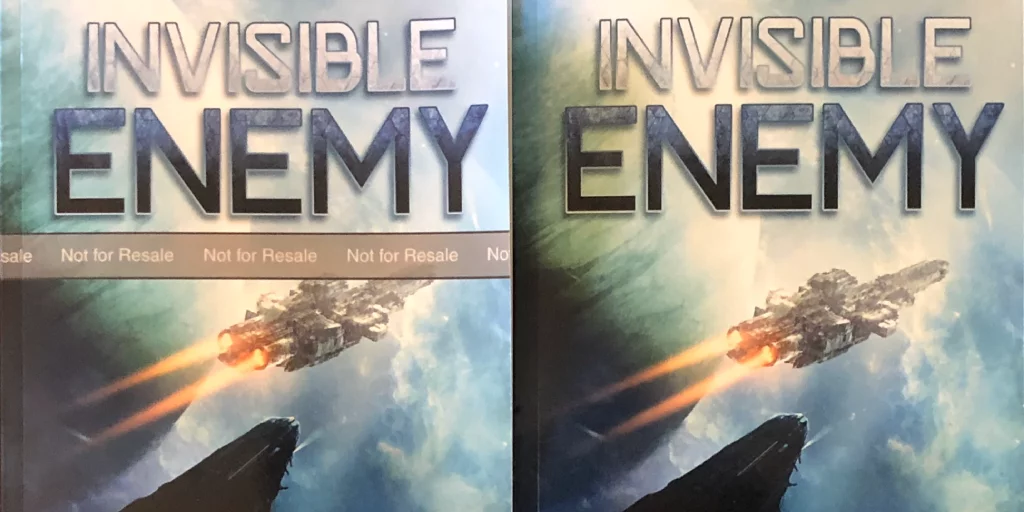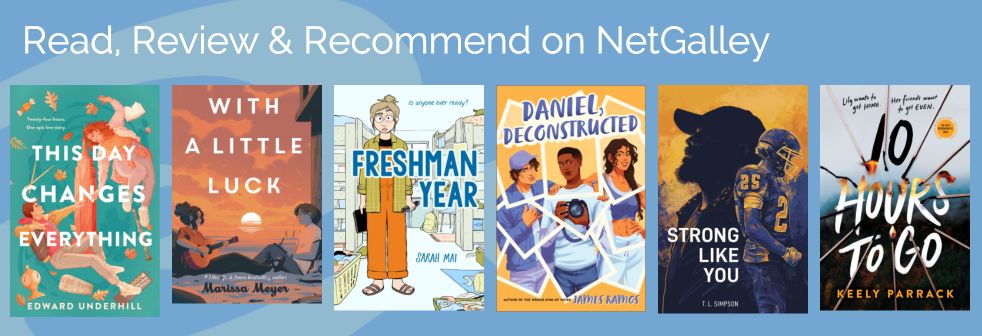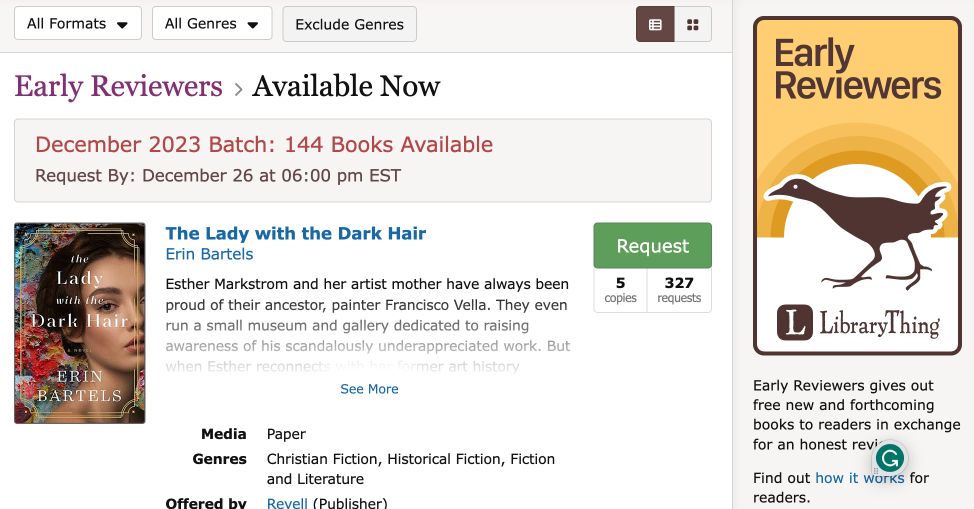If you are a book writer or author, you have likely come across the term advance reader copy or ARC. Designed to generate hype, acquire early reviews and play a significant role in book launches, an ARC is not just a preliminary edition but a strategic tool for writers. This post will explain the essence of an advance reader copy, exploring its purpose, how it benefits writers and why it is a crucial element in the book launch playbook. Whether you are a seasoned author navigating the publishing landscape or an enthusiastic reader curious about the behind-the-scenes magic, this guide provides comprehensive insights into the world of advance reader copies.
- What is an advance reader copy?
- What is the purpose of an advance reader copy?
- Why advance reader copy should be important to writers?
- What is the difference between an advance reader copy and a published book?
- How to create an advance reader copy?
- Who should receive an advance reader copy?
- How to get a free advance reader copy?
What is an advance reader copy?
An advance reader copy (ARC) is a pre-published version of a book given by a publisher to generate hype and acquire early reviews. Review copy, advance reader’s edition, advance copy or galley — these are some alternative names used for advance reader copy. Publishers or authors usually send it out to book reviewers, bloggers, book buyers, journalists, celebrities or authorities on the book’s topic. Some writers also use it as a reader magnet.
ARCs are less expensive to produce than ready books because they are not complete versions of the book. For instance, if the book is to be published as a hardback copy, an ARC will be a paperback. Furthermore, it may still have typo, incomplete illustrations, no dust jacket or formatting and binding may not be finalised. All this helps lower the ARC production cost.
ARCs are normally distributed three to six months before the book is officially released to the general public. Sometimes (if the book is widely anticipated or controversial), a publisher may require the recipients of an ARC to sign a confidentiality agreement. This can help prevent disclosing any information about the book before the official publication date. However, the low number of ARCs produced and distributed in most cases may make that impractical. For instance, a typical genre publisher will create 5,000 ARCs for a new book by a moderately popular writer.
What is the purpose of an advance reader copy?
An advance reader copy plays a significant role in book launches and promotion strategies. It creates early buzz and excitement before the official release date. ARCs are provided to reviewers, booksellers and other industry professionals to promote the book to potential readers and generate sales. For instance, the reviewers usually write the reviews and endorsements later placed on the book cover after they read the ARC.
Additionally, collectors may seek out ARCs because they are unique compared to the published book. Incomplete illustrations or typos that an ARC may contain add value to the book, like coins or stamps with errors.
Why an advance reader copy should be important to writers?
Advance reader copies are essential to writers for several reasons. They can help generate buzz and anticipation for the book’s publication. Additionally, they allow the writers to gather feedback and reviews. They are also a great marketing tool, helping to build a fanbase, connect with readers and spread the news. Furthermore, advance reader copies help to catch any errors, inconsistencies or gaps in the text before its commercial publication.
Generate buzz and anticipation
ARCs allow writers to distribute their work to readers before the official release date. This creates a buzz around the book, generating anticipation and excitement. Positive early reviews from ARC readers can help build momentum and interest in the book.
Feedback and reviews
ARCs allow writers to receive feedback from readers before the final version is published. This feedback can be valuable for identifying areas for improvement, addressing potential concerns, or making last-minute adjustments. Additionally, positive reviews from ARC readers can be used for marketing and promotional purposes. They can be used as a part of the cover design to support the book’s credibility and encourage the readers to buy and read the book.
Word-of-mouth marketing
ARCs contribute to word-of-mouth marketing, often considered one of the most effective forms of promotion. Readers who receive ARCs may share their thoughts with friends and family and on social media platforms, helping to create organic and meaningful interest in the book.
Media coverage
ARCs can be sent to reviewers, bloggers and other media outlets to secure coverage and reviews. Positive reviews from reputable sources can enhance the book’s credibility and visibility in the literary world.
Identifying target audience
Early reader feedback can help writers understand their target audience better. This information can be helpful for future marketing efforts, allowing writers to tailor their promotional strategies to reach the right demographic. In turn, this helps to build meaningful and authentic connections with the readers.
Correcting errors
One of the main advantages of providing an advance reader copy is that it allows writers to catch any errors, inconsistencies or gaps in the text before its commercial publication. While ARCs are not complete versions of the book and may still have typos, incomplete illustrations or formatting and binding issues, they can be transformed into a polished, publishable book with the help of proofreading and copyediting.
Proofreading involves checking for spelling, punctuation and grammatical errors, as well as ensuring consistency in formatting, style and overall presentation. Further, proofreading can help to ensure that the text is error-free and matches the style, tone and language of the rest of the book.
Copyediting, on the other hand, goes beyond proofreading to ensure that the text is clear, concise and engaging. It involves checking for clarity, coherence, and flow, as well as ensuring that the text is consistent in terms of tone, voice, and style. Moreover, copyediting can help to make sure that the text is readable and engaging and that the writer’s message is effectively conveyed to the reader.
By engaging professional proofreaders and copyeditors, writers can improve the quality of their book, ensuring that the final published version is of the highest standard. This can help to enhance the book’s credibility and appeal, making it more likely to attract readers and generate positive reviews.
What is the difference between an advance reader copy and a published book?
An advance reader copy looks different than the published manuscript in terms of the design, quality and content (to varying degrees):
- ARCs are preliminary versions distributed before the official release. They often contain typos and may have a banner or stamp indicating they are not for resale.
- The ARC format varies from the final book. While the final book might be released in hardcover, ARCs are typically softcover.
- ARCs may use lower-quality materials to cut costs, allowing for broader distribution among readers before the official release date.
Moreover, the first page of the ARC often includes a note to potential reviewers or booksellers, which explains that the book is an incomplete, pre-release version and that the design, artwork, page numbers and format may be subject to change. The note should also state that proofreading — one of the final stages of book production — will correct any typographical errors. Furthermore, it could mention the publication date, book price, book format, and the intended readers. Finally, the marketing materials, including the author’s bio and book blurb, can accompany the ARC.
How to create an advance reader copy?
If a publisher or a press is publishing your book, they will usually generate and distribute ARCs, so the author does not need to worry about it. If you are an indie author self-publishing your book, there are a few different routes to create ARCs for your book, depending on your budget. Since self-publishing can be a costly endeavour, let us have a closer look at these options and the cost they entail.
Digital format
The cheapest option is sending out the ARCs as PDFs to desired reviewers, booksellers and bloggers. At this stage, the manuscript has already undergone editing and typesetting (layouting) and is likely in PDF format. Thus, emailing a PDF ARC will incur no additional cost, but remember to add a note stating that this version is a pre-publication ARC.
Print copy and ebooks
To generate low-cost physical softcover or ebook ARCs, consider print-on-demand (POD) platforms like Amazon KDP or Barnes & Noble. For instance, Amazon KDP offers proof copies, which feature a ‘Not for Resale’ watermark and unique barcode with no ISBN. Alternatively, you could use Barnes & Noble’s ‘Personal Books’ option. Personal books are not available for sale and do not require an ISBN. This is important because buying an ISBN for the ARC usually incurs additional costs (depending on in what country you publish the book).
Furthermore, proof copies or personal books options are fantastic because they prevent the ARC from being available for sale on these platforms. An advance reader copy is, of course, not the final and complete version of the book. For this reason, it is intended for sale. Using proof copies or personal books route to create an ARC helps you bypass the risk of publishing the book for sale on the POD platform.

ISBN in ARCs
ISBN stands for International Standard Book Number — a unique ten-digit or thirteen-digit book identifier assigned to each book edition (intended for sale). This means that you every format of the same book — an eBook, audiobook, hardcover, and paperback edition — will have different ISBNs.
ISBN’s primary purpose is identification. An ISBN identifies a book edition published by a specific publisher and is unique to that edition. In turn, this helps booksellers, libraries, wholesalers and distributors market, sell, and warehouse the book. Consequently, libraries, wholesalers and distributors will only accept a book with an ISBN. But if there is no intention to sell the book commercially — in online or physical bookstores — then it does not need an ISBN. For instance, selling the book on your website or creating a collection of printed family recipes as a gift to your loved ones. Likewise, ARCs, only intended for marketing and review purposes, do not need an ISBN.
This is important because ISBNs are not free in many countries. For instance, ISBN issuers in the UK, USA and Australia sell ISBNs in bundles of one, ten, hundred or thousand. On the other hand, in countries like Canada, New Zealand and South Africa, self-publishing writers can obtain ISBNs for free.
Who should receive an advance reader copy?
Typically, specific individuals or groups receive advance reader copies to generate early reviews, build anticipation for the book and create buzz. When deciding who should receive ARCs, it is essential to consider your target audience and focus on individuals or groups who are likely to appreciate and engage with your work. Additionally, prioritise those who can help amplify your book’s visibility through reviews and recommendations. Here are some key groups that might receive ARCs:
- Book reviewers and bloggers: Providing ARCs to book reviewers and bloggers in your genre or niche can result in early reviews that you can post around the time of the book’s release. You could also incorporate them into the book’s cover.
- Bookstagrammers and booktubers: Social media influencers who focus on books, especially on platforms like Instagram and YouTube, can help spread the word about your book through visually appealing posts or video reviews.
- Libraries and bookstores: Sending ARCs to libraries and independent bookstores can create awareness among professionals who may recommend or order copies for their patrons or customers.
- Beta readers: If you worked with beta readers who provided feedback during the writing process, ask if they would like to receive an ARC to see the final product and potentially write reviews.
- Industry professionals: Agents, marketers and other professionals in the publishing industry may receive to identify potential titles for promotion or acquisition.
- Fans and newsletter subscribers: Rewarding your most dedicated readers and subscribers with ARCs can foster a sense of community and loyalty. They may be more likely to share their thoughts and promote the book among their networks.
- Promotional giveaways: Using your ARC as a reader magnet or running contests or giveaways on social media or your website can be effective ways to generate excitement pre-release.
How to get an advance reader copy for free?
Getting an advance reader copy for free typically involves engaging with authors, publishers or platforms that offer ARCs in exchange for reviews or promotional efforts. Remember that after receiving free ARCs, you should provide an honest review or engage in some form of promotion. Always respect the terms and conditions set by the author, publisher or platform providing the ARCs. Additionally, by building a reputation as a reliable and thoughtful reviewer, you can increase your chances of publishers and authors selecting you for future opportunities.
Here are several ways you might be able to receive ARCs for free:
Author’s social media and websites
Follow authors and publishers on social media. They often include ARCS as a part of giveaways or competitions. You can also join authors’ newsletters or mailing lists, which usually include ARC as their reader magnet. Keep an eye on authors’ or publishers’ websites for ARC giveaways or opportunities.
Publishers’ websites
Many publishers post invitations for book reviewers to reach out for ARCs on their websites. Here are some publishers who are currently giving away ARCs in return for book reviews:
- Bethany House search for Christian fiction reviewers.
- Quirk Books look for book bloggers and social media influencers of all genres.
- Simon & Schuster imprints invite all-genre ARC queries.
- Penguin Random House Community invites book influencers of all genres.
- Hachette UK imprints also look for book reviewers of all genres.
- HarperCollins UK imprints invite book reviewers registered with Edelweiss to get in touch.
- Macmillan Influencer & Reviewer Program is open to inquiries from book reviewers.
NetGalley and Edelweiss
Sign up for accounts on NetGalley, Edelweiss or other ARC platforms where publishers often make ARCs available to reviewers. There, you can create a detailed profile, request ARCs matching your reading preferences and build a reputation as a book reviewer.

Goodreads giveaways
Keep an eye on Goodreads for book giveaways, which often include ARCs. Enter giveaways and follow authors or publishers for updates on future opportunities. They also have a group called Making Connections, where authors, bloggers, publishers and reviewers can connect, find followers and ask for help.
LibraryThing Early Reviewers
LibraryThing offers an Early Reviewers program where you can sign up to receive free advance copies in exchange for reviews.

Social media and book communities
Join book-related groups on platforms like Facebook, Reddit or other forums. Participate in discussions and watch for ARC giveaways or opportunities shared by authors or publishers. You can also follow book bloggers and bookstagrammers on social media. Participate in their ARC giveaways or contests. Alternatively, start building a following on social media to become a book influencer.
Final thoughts
An advance reader copy is more than a pre-published book version. Most importantly, ARCs serve to generate hype, acquire early reviews and play a pivotal role in book launches. Writers benefit immensely from ARCs, using them to generate anticipation, receive crucial feedback and build a devoted fanbase. In addition, they act as a foundation for word-of-mouth marketing, media coverage and identifying a target audience. Moreover, writers also use ARCs to correct errors before final publication, ensuring a polished and high-quality book.
I am an experienced editor, working with non-fiction, academic and business books. If you need a second pair of eyes proofreading and editing your manuscript or ARC, contact me for a free sample edit (and remember to use my early bird discount).


